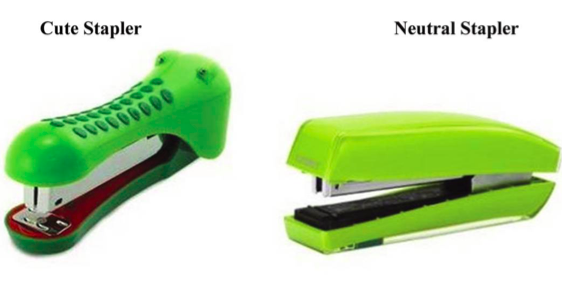The Adorable Peril Of Whimsy: Cute Products May Lead To More Spending
 When faced with the decision between purchasing a plain, silver ice cream scoop or a light blue, whale-shaped ice cream scoop, you better believe I’m picking the cute sea mammal. But will that adorable scoop lead me down a path of even more indulgent spending?
When faced with the decision between purchasing a plain, silver ice cream scoop or a light blue, whale-shaped ice cream scoop, you better believe I’m picking the cute sea mammal. But will that adorable scoop lead me down a path of even more indulgent spending?
A new report, “So Cute I Could Eat It Up: Priming Effects of Cute Products on Indulgent Consumption”, in the Journal of Consumer Research found that consumers are more likely to be indulgent and spend money on items they perceive to be cute or playful rather than ordinary, plain products.
The study [PDF] builds on prior research that has shown exposure to cute babies or baby animals leads to more careful behavior from consumers.
“We were not convinced that all cute products would lead to the restrained behavior that stems from baby-cuteness. Our research examined whether there are indeed different types of cuteness, and if these differences could lead to more or less indulgent behavior,” authors Gergana Y. Nenkov, from Boston College, and Maura L. Scott, from Florida State University, say in a news release..
Researchers conducted several experiments to examine consumers’ consumption and indulgence behavior.
The first study examines the effect of whimsical products – in this case an ice cream scoop – on actual consumption.
Study participants were given either a playful scoop or neutral scoop and then asked to serve themselves as much ice cream as they wanted. Participants who served themselves with the whimsical utensil scooped and ate more ice cream than those who used the neutral scoop.
Researchers say the result provides evidence that the effects of cute products on indulgence extends to utilitarian products used for pleasurable consumption.
The second study examined consumers’ usage of a whimsical product, in this case an alligator-shaped stapler, versus a neutral, plain stapler.
When consumers were exposed to a whimsical option they were more likely to use the stapler for indulgent purposes, such as crafts, while they tended to use the neutral stapler for work-related purposes.
The idea that whimsically cute stimuli leads to more indulgent behavior was further proven when participants were given either a brightly decorated or a plain Amazon gift card and asked to purchase a movie. Participants with the whimsical gift cards were more likely to purchase indulgent or lowbrow videos.
While the research shows a connection between consumer’s indulgent nature and cute products, the researchers say the data could translate into other aspects of consumer behavior.
“Even though we examined the effects of playful products on indulgence in the domains of eating, shopping, and product usage, we expect that exposure to whimsical products could have similar effects on helping people focus on having fun and rewarding themselves in other important life domains like savings, debt repayment, or time management,” the study authors say in a press release.
Too Cute to Resist: Do Whimsical Products Make Consumers Overspend? [Journal of Consumer Research]
Want more consumer news? Visit our parent organization, Consumer Reports, for the latest on scams, recalls, and other consumer issues.

